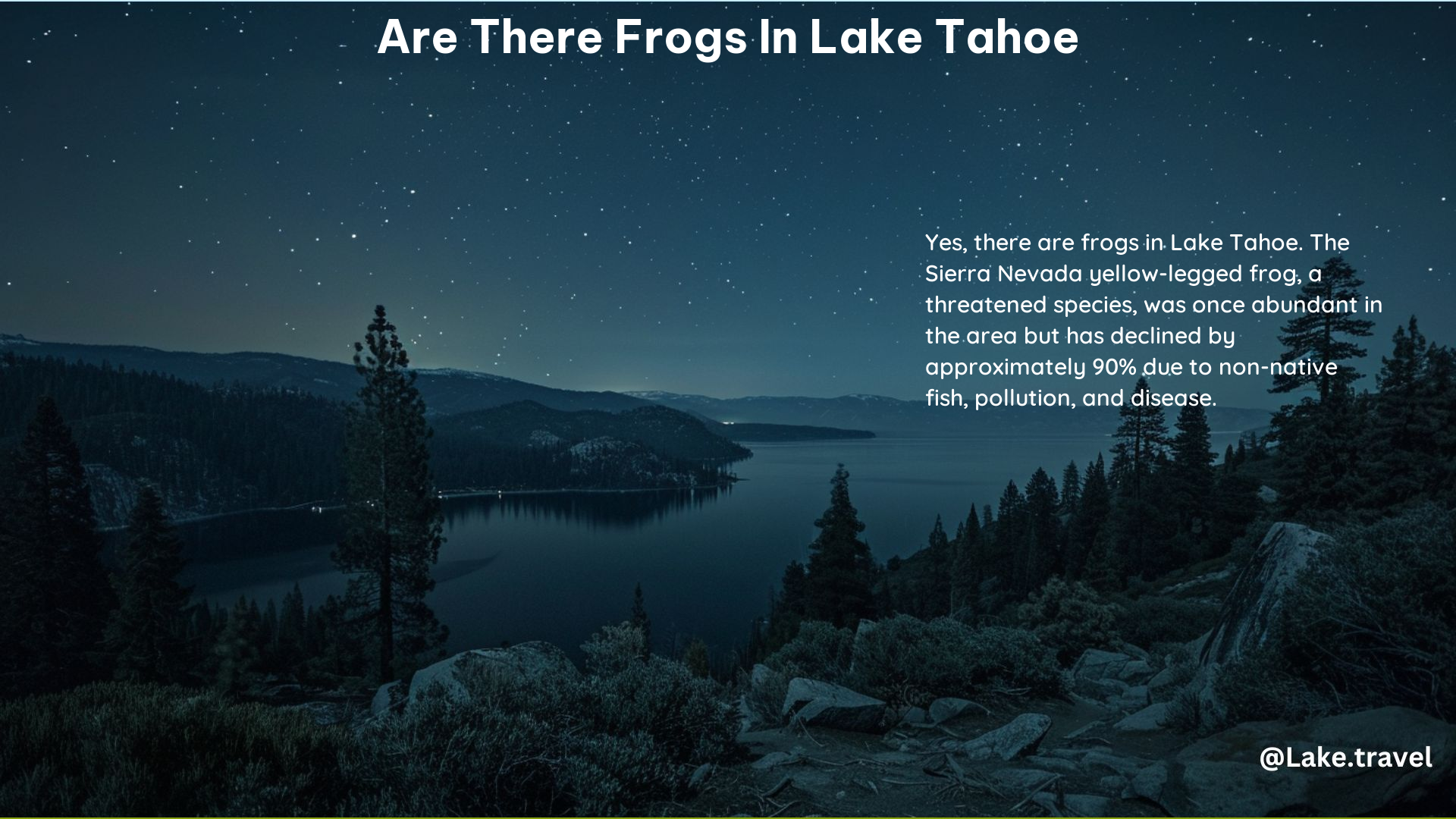Yes, there are frogs in Lake Tahoe. The Sierra Nevada yellow-legged frog (Rana sierrae) is native to the region and can be found in the vicinity of Vikingsholm Castle at Lake Tahoe. This species is known for its unique ability to survive high-altitude freezing winters and is typically found in marshes, ponds, lakes, and meadows at high elevations.
Types of Amphibians in the Vicinity of Vikingsholm Castle at Lake Tahoe
The Lake Tahoe region is home to several species of amphibians, including:
- Sierra Nevada Yellow-Legged Frog (Rana sierrae): This endangered species is native to the region and can be found in the vicinity of Vikingsholm Castle at Lake Tahoe. They are known for their distinctive garlic-like odor when disturbed and their ability to survive high-altitude freezing winters.
- Sierran Tree Frogs: These frogs are commonly seen in meadows after spring snow melts and are known for their ability to hibernate over winter.
- Bullfrogs: While not native to the Sierra, bullfrogs can be found in the Tahoe Basin and are known for their large size and green coloration.
Threats to Frogs in Lake Tahoe

The frogs in the Lake Tahoe region face several threats to their survival:
- Non-Native Fish: The introduction of non-native trout has led to the decline of the Sierra Nevada yellow-legged frog population as they prey on the frogs’ eggs and tadpoles.
- Pesticides: The use of pesticides has been harmful to the frogs as they breathe through their skin, causing chemical imbalances and health problems.
- Amphibian Chytrid Fungus: This fungus has spread across the Sierra, causing the decline of amphibian populations by restricting their ability to absorb water and breathe.
- Habitat Degradation: Livestock grazing and human activities have led to habitat degradation, further threatening the survival of these frogs.
Conservation Efforts
Efforts are being made to protect and conserve the frogs in the Lake Tahoe region:
- Wetland Construction: Efforts have been made to construct wetlands that resemble naturally occurring habitats, providing a safe environment for frogs to thrive.
- Research and Monitoring: Scientists are actively monitoring frog populations and studying the effects of various threats to develop effective conservation strategies.
In conclusion, the Lake Tahoe region is home to a variety of amphibian species, including the endangered Sierra Nevada yellow-legged frog. While these frogs face numerous threats, conservation efforts are underway to protect and preserve their habitats and populations.
References
- https://www.tmparksfoundation.org/animals/sierra-nevada-yellow-legged-frog
- https://www.tahoedailytribune.com/news/sierras-yellow-legged-frog-still-threatened-but-officials-have-hope/
- https://www.fws.gov/story/2024-05/threatened-frogs-move-wetlands-tahoe-national-forest-burn-scar
- https://www.4swep.org/post/color-tahoe-endangered-frog
- https://californiaherps.com/identification/frogsid/frogs.id3.html
